Navratri Festival
Introduction
Navratri, the festival of nine nights is dedicated to Goddess Durga and her nine forms. According to the Hindu calendar, Navratri begins from the first day of the bright fortnight of Ashwin which usually coincides with the end of the rainy season.
The nine days have great religious significance as Goddess
Durga, the divine mother, had destroyed the evil force (in the form of the demon Mahisashura) during this period.
The festival is celebrated with true devotion and purity all over the country. People from various sections of the society irrespective of caste and creed celebrate this festival by visiting temples and offering pujas at the Mother’s feet.
In some places special puja samarohas are also held by setting the images of Mother Durga on beautifully decorated pandals. Temples dedicated to Shakti also make arrangement for pujas and bratas to mark these nine days as true symbols of devotion and adoration towards the divine mother.
Legends
Navaratri is an amalgamation of various themes, with the common theme of the victory of good over evil. According to some legends, Vijayadashami or Dusshera is celebrated on the day Lord Ram kills Ravana.
According to a Puranic legend, the mighty demon Mahishasura defeated the gods and their king,Indra.
They then approached Brahma, Vishnu and Maheshwar, who decided to destroy the demon. So they all combined their energies, and gave rise to Shakti and appealed to Goddess Durga to come to their aid.
Equipped with lethal weapons and riding a ferocious lion, the Goddess in all her awesome majesty, destroyed the evil one without much ado. The 10th day, on which the goddess kills Mahishasura, is celebrated as Dusshera or Vijayadashami as the victory of good over evil. Dusshera (tenth day) is one of the significant Hindu festivals, celebrated with pomp and fervor all over the country.
On the tenth day, the Vijayadasmi day, colossal effigies of Ravana, his brother Kumbhkarna and son Meghnadh are placed in vast open spaces. Rama, accompanied by Sita and his brother Lakshmana, arrive and shoot arrows of fire at these effigies. The result is a deafening blast, enhanced by slogans of triumph.
In burning the effigies the people are asked to burn the evil within them, and thus follow the path of virtue and honesty. On this day in the famous Ramleela grounds in Delhi, huge effigies of the ten-headed demon king Ravana, Meghanath, his son, and Kumbhakarna, his brother, stuffed with explosive materials are torched by an arrow to symbolize the ultimate triumph of good over evil.
Navratri Celebrations
The festival is also celebrated with intense fervor and zest, in whole of India, in the form of Durga Puja. The vibrant festivities last for ten days, of which nine nights are spent in worship. But the celebrations vary from place to place.
Gujarat and western India
The most famous Navaratri celebrations are held in the western states of India (Gujarat and Maharashtra). Traditional dances in the form of Dandiya and Garba take place almost everywhere. The dancers move around in a circle, with different steps around a lamp, which signifies the Eternal Light of the Durga.
Generally Gujarati men and women wearing colorful dresses dance around in a circle by clapping their hands or decorated sticks to the rhythm of the devotional songs. After worshipping and 'Aarti', 'Dandiya raas' is performed all through the night.
In Maharashtra, celebrations are slightly different. Navratri is dedicated to Goddess Durga while the Vijayadashami is dedicated to Saraswati, the Goddess of Knowledge. Here, this day is considered auspicious to start education, buy new homes, and start new ventures.
West Bengal
In West-Bengal, Navaratri is celebrated in the form of Durga Puja. This festival is essentially religious in nature. Celebrated with true devotion, huge idols of the Goddess Durga posed as killing the demon Mahishasura are worshipped everywhere in West Bengal. Huge 'pandals' are set up every where and devotees in large numbers visit to worship Goddess Durga. Men and women and children all dressed up in new clothes visit different ‘pandals’ to offer prayers to the Mother Goddess.
Himachal Pradesh
In the Kulu valley of Himachal Pradesh, the hill-folk celebrate Dasara with a grand mass ceremony. On the day of Dusshera, village deities are taken out in elaborate processions.
Tamil Nadu
In Tamil Nadu, the first three days are dedicated to the worship of Lakshmi, the Goddess of wealth and prosperity. During this time they perform puja every night and regular cleaning is maintained all throughout because it is believed that Lakshmi would not enter if the place is dirty. The next three days are devoted to Saraswati, the Goddess of learning and arts and the last three days to Shakti (Durga).
Karnataka and Andhra Pradesh
In Karnataka and Andhra Pradesh, women arrange 'Bommai Kolu', a special placing of dolls in various costumes decorated with flowers and ornaments on specially prepared steps. Nine young 'kanyas' or virgins are offered new clothes and sweets as the goddesses and married women share flowers, kumkum and snacks among themselves.
The Dusshera of Mysore is also quite famous where decorated elephants lead a colourful procession through the gaily-dressed streets of the city. During Navaratri Chamundi, the royal deity of the Mysore royalty is worshipped with pomp and religious fervor.
Punjab
Navratri is celebrated in Punjab by fasting for seven days. On the eighth day or Ashtami, the fast is broken by worshipping young girls who are believed to symbolize the Goddess herself. This festival is predominantly linked with harvest. The young girls are offered puris (sort of deep-fried Indian bread), halwa (a dessert primarily made of flour and sugar), chanas (Bengal gram) and red chunnis (long scarves).
Navratri Puja
Navratri is celebrated twice in a year.One after the festival of Holi in the month of Chaitra Shukla Paksha from Ekam (First day) to Navmi (Ninth day). These are called Vasanth Navratri. In this, prayers are offered to Lord Vishnu.
Once before Dussehra in the month of Ashwin Shukla Paksha on Ekam (first Day) to Navmi (9th day). These are called Sharadeeya Navratri. In these nine days of Navratri, we pray to Durga Maa.
On the eight day of this Navratri, Durga Maa was born, hence her puja on this day is of special significance.
These nine days also have a special significance for unmarried girls.
Preparation for the Puja
- Picture or image of Durga Maa
- Durga Sapthashati book, Devi’s armour
- Water in a kalash, mango leaves, coconut
- Roli, moli, chawal, paan, betl nut.
- Cloves, cardamom, sindoor, abhir, gulal
- Dhoop, deepak, matchsticks
- Flowers such as hibiscus, lotus, roses and belpatr leaves
- Fruits such as pomegranate and sweets such as laddoo and peda
- Panchpatra containing spoon and water, pata, mat to sit (Aasan)
Jhuwara is grown - On the first day of Navratri, take a large earthen pot with a wide mouth, put some sand in it and plant either jaun or wheat kernels which have been soaked the previous night. Every day a little water is sprinkled over them and they are put in sunlight for a short time for germination.
Vidhi / Method of performing puja
Place the kalash by putting wheat grains on the pata, fill water in the kalash, place live mango tree leaves in the mouth of the kalash and put a coconut in the middle, Moli is tied on the neck ofthe kalash.
Place Durga Maa’s image on the pata and worship with roli, rice, flowers, belpatr, sindoor, abhir and gulal.
Maa ki jyoti lena
Take a small clay pot, add a burning coal to the pot, pour ghee over the coal and offer a small piece of laddoo, peda or halwa. Keep adding ghee at intervals. The higher the flame the more auspicious it is. This jyoti / light has to be maintained throughout the puia. At the conclusion, fold your hands and circle them around the jyoti.
Light dhoop and deepak
Perform Durga Saptashati or Devi Kavach (hymn invoking Devi's protection) either yourself or by a Pundit.
Some people go to the temple for these nine days to perform the puia.
Many people fast on this Day. At least one meal should be a phalaahaar and the other can be with cereal.
Many people conclude the puja on the 8th day by doing Devi ki Kadhai. On this day, Maa ki jyoti is taken with halwa. You should make atta halwa, chawal ki kheer, puri, kaala chana (black grain) and one or two vegetables. Unmarried girls are invited for meal. After the food, the girls are given some fruits and money as Dakshina.
Some people do Devi ki Kadhai on the 9th day.
‘Durga Stuti’ is sung:
“Ya Devi Sarvabhuteshu shri rupen sansthita
namas tasye namas tasye names tasye namo namah”
‘Durga Maa ki Aarti’ is sung:
Jai Ambe Gauri, Mayya Jai Shyama Gauri...
Tumko Nishidin Dhyavat, Tumko Sabdin Sevat, Hari Brahma Shivji... Jai!!
Manga Sindoor Virajat, Teeko Mrigmad Ko, Maiya Teeko Mrigmad Ko...
Ujjwal Se Dou Naina, Ujjwal Se Dou Naina, Chandra Vadan Neeko… Jai!!
Kanak Saman Kalevar, Raktambar Raje, Maiya Raktambar Raje…
Raktapushpa Galmala, Lalpushpa Galmala, Kantahan Har Saje… Jai!!
Kehari Vahan Rajat, Khadag Khappar Dhari, Maiya Khadag Khappar Dhari…
Sur Nar Munijan Sewat, Sur Nar Munijan Sewat, Tinke Dukkhahari… Jai!!
Kanan Kundal Shobhit, Nasagre Moti, Maiya Nasagre Moti…
Kotik Chandra Diwakar, Kotik Surya Diwakar, Samrajat Jyoti… Jai!!
Shumbhu Nishumbha Vidare, Mahishasur Ghati, Maiya Mahishasur Ghati…
Dhoomra Vilochana Naina, Madhura Vilochana Naina, Nishidin Madmati… Jai!!
Brahmani Rudraini, Tum Kamala Rani, Maiya Tum Kamala Rani…
Aagam Nigam Bhakhani, Aagam Nigam Bhakhani, Tum Shiv Patrani… Jai!!
Chaunsath Yogini Gavet, Nritya Karen Bhairon, Maiya Nritya Karen Bhairon…
Bajat Tal Mridanga, Bajat Dhol Mridanga, Aur Bajat Dumroo… Jai!!
Bhuja Char Ati Shobhit, Var Mudra Dhari, Maiya Var Mudra Dhari…
Manwanchhit Phal Pavat, Man Iccha Phal Pavat, Sewat Nar Nari… Jai!!
Kanchan Thal Virajat, Agar Kapoor Bati, Maiya Agar Kapoor Bati…
Malketu Mein Rajat, Malketu Men Rajat, Koti Ratan Jyoti… Jai!!
Durgaji Ki Aarti, Jo Koi Nar Gave, Maiya Jo Sunder Gave…
Kahat Shivananda Swami, Ratata Shivananda Swami, Sukh Sampati Pave!!
Jai Ambe Gauri, Mayya Jai Shyama Gauri...
Tumko Nishidin Dhyavat, Tumko Sabdin Sevat, Hari Brahma Shivji!!
Bolo Durge Maiyya ki Jai!!!
Rituals
Navratri is divided into sets of three days to adore three different aspects of the supreme goddess or goddesses. During Navratri, different forms of Mother Goddess are worshipped. On the first three days Durga or Goddess of Energy is worshiped.
The next three days are devoted to Lakshmi or Goddess of Wealth and the last three days for Saraswati or Goddess of Knowledge. On the fifth day, it is traditional to worship Saraswati to invoke our spirit and knowledge.
On the eighth and ninth day, Yagna (sacrifice offered to the fire) is performed to honor Durga Mata and bid her farewell. The 10th day, on which the goddess kills Mahishasura, is celebrated as Dusshera or Vijayadashami as the victory of good over evil to commemorate the victory of Lord Ram over Ravana. On Dusshera, an effigy of Ravana is burnt to celebrate the victory of Lord Ram.
Fast is observed by devotees during all the nine days of Navratri. Prayers are also offered for good health and prosperity. Navratri, besides being a period of introspection and purification, is also considered an auspicious time for starting new ventures.
During this period, a pot is installed (ghatasthapana) in a sanctified place at home and a lamp is kept lit in the pot for nine days. The pot symbolizes the universe and the uninterrupted lit lamp is considered as a medium for worshipping the effulgent Adishakti, i.e. Sree Durgadevi.
Nine days of Navratri
First Day
The first day is dedicated to the Goddess Durga is called Shailputri, the daughter of the Himalayas. She is a form of Shakti, the companion of Lord Shiva.
Second Day
The second day is dedicated to the Goddess Durga is known as 'Brahmacharini'. The name is derivative of the word 'Brahma', which means 'Tapa' or penace. She is also a form of Mata Shakti.
Third Day
The third day is dedicated to the goddess Chandraghanta, the symbolic representation of beauty and bravery.
Navratri.
Fourth Day
The fourth day is dedicated to the goddess Kushmandas, the creator of the entire Universe.
Fifth Day
The fifth day is dedicated to the Goddess Skand Mata, the mother of the chief warrior of the Gods army the Skanda.
Sixth Day
The sixth day is dedicated to the goddess Katyayani with three eyes and four hands.
Seventh Day
The seventh day is dedicated to the Goddess 'Kalratri', meant to make the devotees fearless.
Eighth Day
The eight day is dedicated to the Mata Rani or 'Maha Gauri', represents calmness and exhibits wisdom.
Ninth Day
The ninth day is dedicated to Durga also referred as Siddhidatri. It is believed that she has all the eight siddhis and is worshipped by all the Rishis and Yogis.
Recipes
India is the land of festivals and festivals bring time to enjoy with family and friends, Delicious and mouth watering food adds another star to the level of enjoyment. Navratri is a festival, which is celebrated for nine days. Therefore, ample varieties of dishes are prepared during this festival. There is a practice of observing fast during navratri in many regions of India and even pure satvik food is taken that is vegetarian and without onion and garlic. Following are few recipes for dishes, which can be prepared during nine days festival.
Sobudana Puri
Gujrati Kadhi
Vrat ke chawal
Aval kesari
Singhare ka Halwa
Mahanavmi
Mahanavmi is the final day of Navratri celebrations. This day comes with mix feelings. On one side the passion reaches to its highest on this day while on the other side, devotees get emotional as this day marks the end of navratri celebrations. Celebrations of Mahanavmi, varies from state to state in India.
On the ninth day of the Navratri, goddess is worshipped as Durga and offered sugarcane stalks. Kanya puja is also practiced on this day in different parts of India like Punjab, Harayana, Uttar Pradesh and Bihar. In Kanya puja, nine young girls (who have not attained puberty) are invited in houses and are feasted with puri, chana ki sabzi, kheer, halwa etc. These girls are treated as nine forms of the goddess and are honored by washing their feet and putting tilak on their forehead. Devotees also present them certain gifts like clothes, fruits etc.
In Kerala, Saraswati puja is practiced on asthmi, a day before mahanavmi. The mahanavmi day is treated as resting day. People don’t begin new activities on this day and children don’t even study on this day.
The celebrations of navratri end on asthmi instead of navmi in some parts of Kashmir, Harayana, Uttar Pradesh and Maharastra. Asthmi, the eight day of navratri is also considered as the birthday of Parvati, the form of Durga.
Dussehra
In the months of Ashwin and kartik, Hindus observe a 10 day ceremony of fast, rituals, celebrations, fiests to honor the mother Goddess and triumph of Lord Rama over Demon Ravana. Dussehra also symbolizes the triumph of warrior Goddess Durga over the buffalo demon, Mahishasura. Thus, it is a celebration of victory of good over evil.
This celebration starts from Navratri and ends with the tenth day festival of “Dussehra”. Navratri and Dussehra is celebrated throughout the country at the same time, with varying rituals, but with great enthusiasm and energy as it marks the end of scorching summer and the start of winter season.
The tenth day after Navratri is called Dussehra, on which number of fairs are organized throughout the northern India, burning effigies of Ravana.It is also called “Vijayadashmi” as this day marks the victory of Lord Rama over Ravana. VijayaDashami is considered to be an auspicious day for the Indian householder, on which he worships, protects and preserves 'Shakti' (power). According to Scriptures, by worshipping the 'Shakti' on these nine-days the householders attain the threefold power i.e. physical, mental and spiritual, which helps him to progress in life without any difficulty.
The 'Ramlila' - an enactment of the life of Lord Rama, is held during the nine days preceding Dussehra. On the tenth day (Dussehra or Vijay Dasami), larger than life effigies of Ravana, his son and brother - Meghnadh and Kumbhakarna are set to fire.
The theatrical enactment of this dramatic encounter is held throughout the country in which every section of people participates enthusiastically.
In burning the effigies the people are asked to burn the evil within them, and thus follow the path of truth and goodness, bearing in mind the instance of Ravana, who despite all his might and majesty was destroyed for his evil ways.
Legends
Dussehra is also known as Vijaya Dasami, because of the victory of Ram over Ravana. On this day in Satya Yug, Ram (the eighth incarnation of Lord Vishnu), killed the great demon and king of Lanka, Ravana.
Puranas also opined that in this day warrior Goddess Durga defeated and killed the buffalo demon Mahishasura.
When is Dussehra Celebration?
Dussehra is the last day of Navratri; it falls on the 10th day of the waxing moon during the Hindu month of Ashvin (around September or October).
Navratri Kolu/ Golu
In the Southern states of India Tamilnadu, Andhra Pradesh, Karnataka and some communities of Kerala, special tradition of navratri Kolu is practiced during nine days of navrarti. Also referred as navratri golu, basically is the tradition of displaying dolls/ kolus/ golus in odd numbered (7, 9) tiers. Women and unmarried girls at home decorate the dolls and set these dolls on planks in corner of the house.
Even some people invite special artists for exhibiting dolls in eye-catching manner while at some places, the communal kolu is organized at the grand level in the centre of society or apartments. In such communal affairs, huge collection of dolls is made by collecting dolls from different houses in that particular area. These dolls are passed on from generations to generations and even new dolls are also added on each navratri.
Customs:
There is a custom to visit relatives and friend’s houses in order to see their kolu during navratris. Host family give them Prasad (offering presented before god) and kumkum. Married and unmarried women also exchange gifts like coconut, clothes and sweets. In the evenings, whole family sit together before Goddess and lit a "kuthuvilakku" (small lamp) in centre of Rangoli and chant devotional hymns and shlokas. After that food items prepared on that particular day are presented before Goddess and distributed as prasad.
Belief:
Devotees strongly believe that dolls or kolu represents the represents the assembly of Goddess Durga. As per belief the idea of arranging these dolls on different tiers symbolizes that Goddess Mahishasuramardini is sitting in her Kolu, prior to the assassination of the demon Mahishasura.
Best Wishes
Navratri, the nine days festival is full of religious practices and merry making. Following are few messages to wish your near and dear ones:
Maa Durge,
Maa Ambe,
Maa Jagdambe,
Maa Bhawani,
Maa Sheetla,
Maa Vaishnao,
Maa Chandi,
Mata Rani meri aur apki manokamna puri karey..
JAI MATA DI.
Lakshmi ka Hath ho,Saraswati ka Sath ho,Ganesh ka niwas ho, aur maa durga ke
ashirwad se Aapke jeevan mai prakash hi prakash ho….
‘HAPPY NAVRATRI’
“Maa ki jyoti se prem milta hai, sabke dilo ko marm milta hai, jo bhi jata hai MAA ke dwar , kuch na kuch jarur milta hai. ”
SHUBH NAVRATRI.
This Navratri, may you be blessed with good fortune as long as Ganeshji’s trunk, wealth and prosperity as big as his stomach, happiness as sweet as his ladoos and may your trouble be as small as his mouse.
Happy Navratri.
Maa Durga Se Vinti Hai Ki Apke Jeevan Main Sukh, Samradhe, Dhan, Yas, Pardhan Kare.
Happy Navratra!
Khushian ho overflow, masti kabhi na ho low, apnonka surur chaya rahe, Dil
me bhari maya rahe, shohrat ki ho bauchhar, aisa aaye aapke liye “dandia ka tyohar”
May Maa Durga empower u & ur family with her Nine Swaroopa of Name, Fame,
Health, Wealth, Happiness, Humanity, Education, Bhakti and Shakti. HAPPY NAVRATRAS!
May this festival be the harbinger of joy and prosperity. As the holy occasion of Navratri is here and the atmosphere is filled with the spirit of mirth and love, here’s hoping this festival will be great for you!
HAPPY NAVRATRAS!
May your life be filled with happiness on this pious festival of Navratri,
Happy Navratri!
Fortunate is the one who has learned to Admire, but not to envy. Good Wishes for a joyous Navratri and a Happy New Year with a plenty of Peace and Prosperity.
SHUBH NAVRATRI.
Navratri, the festival of nine divine nights is full of festivity and merry making. The festival of Navratri is the perfect blend of fun, dance and worship of Goddess Durga.
Navratri is celebrated twice in a year, once in the month of March or April and other in the month of September or October. The second Navratri is dedicated to worship of goddess Durga and is the most awaited festival for all age groups.
According to Hindu calendar, Navratri is observed on the first day of the Shukla Paksha (Waxing Phase of moon) in the Hindu month of Ashwin (September- October).

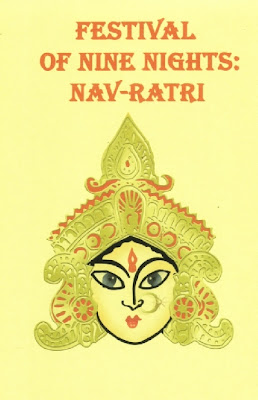
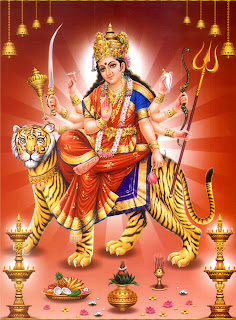
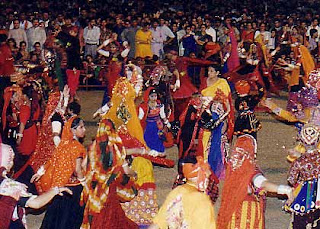
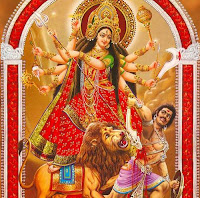
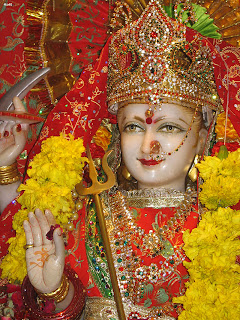



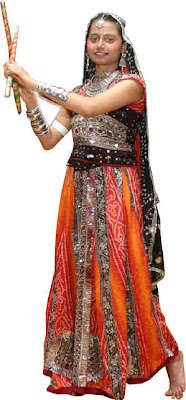







May this navratri bring happiness and Prosperity to all..Happy Navratri..Thanks for sharing.
ReplyDeleteNavratri celebration at AOL International Centre Bangalore is really unique. This fact of heavy rains is unbelievable...I saw it for the first time this year..
ReplyDeleteOverall experience is beyond words, someone has tried to summarise it..check it out...
http://www.artoflivingsecrets.com/2012/10/a-glimpse-into-navaratri-at-bangalore.html
Happy Navratri to all..May this navratri bring happiness and Prosperity to all..Thanks for sharing.
ReplyDeleteNavratri is a Festival of joy and color. It's Hindu religious Festival . All Hindu people celebrate this Festival for "MA Durga". Happy Navratri to all~
ReplyDeleteThis comment has been removed by a blog administrator.
ReplyDelete